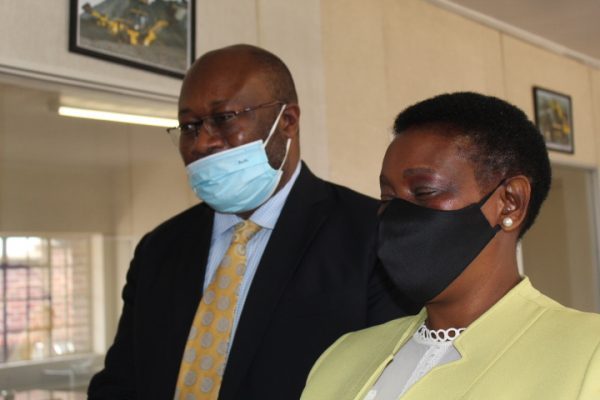ZMF still engaging Mines Ministry on mining fees increase

The Zimbabwe Miners Federation (ZMF) is still engaging the Ministry of Mines and Mining Development (MMMD) over the recently gazetted Statutory instruments (SI) 44 and 46 of 2021 which saw mining fees hike averaging 2000% suspended after an outcry.
Rudairo Dickson Mapuranga
In a statement ZMF President Ms Henrietta Rushwaya advised members that they are still engaging the Ministry of Mines and Mining Development regarding the newly gazetted statutory instruments and miners will be advised of the outcome.
“Please be advised that the ZMF officials are still engaging the Ministry of Mines and Mining Development regarding the two (2) newly gazetted Statutory Instruments (SI) 44 and 46 of 2021 respectively. The Ministry of Mines and Mining Development is also treating this matter with the urgency it deserves and our Dear Miners will be notified of the outcome as soon as the issue is concluded,” Rushwaya said in a statement.
In a document, the ZMF also indicated that the hike that the government had instituted was going to affect the Federation’s formalization and regularization drive thereby becoming a large hindrance to the President’s vision for the mining sector achieve a US$12 Billion mark by 2023.
“A closer analysis of the price increases indicates that all prices were hiked by 2000 per cent. The price increases will affect the government-set target of US$12 billion by 2023 as it will push out most artisanal and small-scale miners from the mainstream economy. ZMF, therefore, requests for a revision of prices downwards by 300% as indicated on the graphs.” read the document.
“An analysis of the past 4 years from 2017 to 2020 shows that the ASM sector has been producing more than the big mining operations with a record averaging 60 per cent of the total gold production as recorded at FPR. The period 2017 to 2020 has seen the ASM sector producing 60 tonnes against 42 tonnes for the large-scale miners.”
“It is no overstatement that small scale mining contributes quite significantly to economic growth. The government, therefore, needs to incentivize their operations. Revising the prices downwards will definitely promote the ASM in the mainstream economy.” Read the statement in part.
Local mining expert Mr Hyde Elasto Watyoka said he is proposing a two-tier statutory fee charge from MMMD whereby locals pay a lower rate and foreign or any entity that includes foreign ownership pays the higher charge.
“In my opinion, our mining regime allows for cost-saving shortcuts, especially to foreign ownership. It, therefore, follows that it will not be amiss to them if we compensated ourselves by charging these foreigners 10 000% of what locals pay in statutory licencing charges”.
“Besides, these foreign companies are getting very cheap loans in their countries for mining in Africa. In most instances, they are forced by the loan conditions to source equipment from their local suppliers. In this way, African is serving as a side or surplus market to their goods. That also is reason enough to justify us to charge a higher premium for their entry into our mining market”.
In other words, I am proposing for a two-tier statutory fee charge from MMMD whereby local pay a lower rate and foreigners or any entity that includes foreign ownership pays the higher charge. This is the easiest way to indirectly incentivize locals, accommodate foreigners and balance our revenue budget,” Watyoka concluded.
The new prices affect the formalization process as more miners remain in the informal sector. Currently, 84 per cent are illegal miners against 16 per cent registered in accordance with the Mines and Minerals Reg Act.


